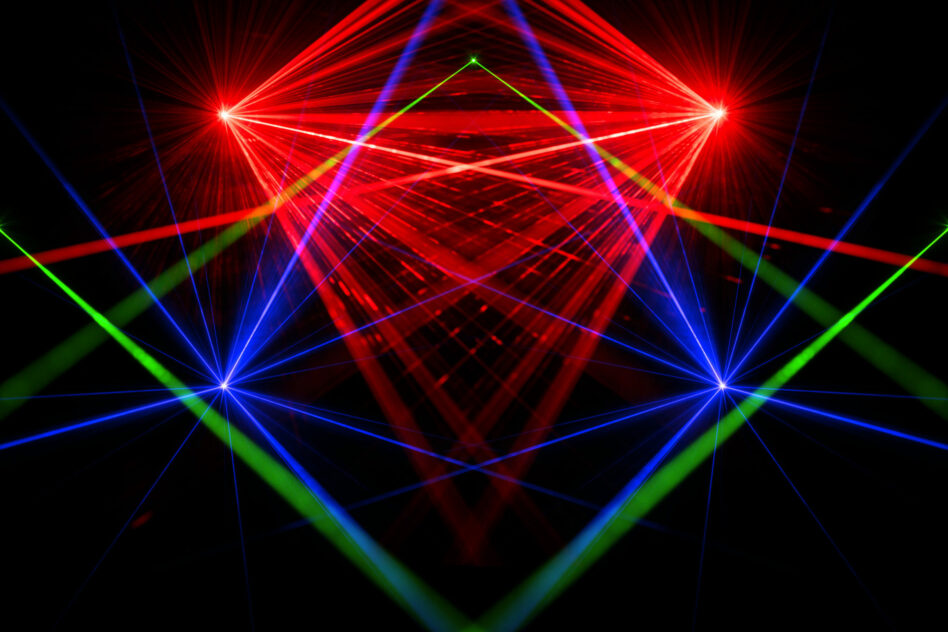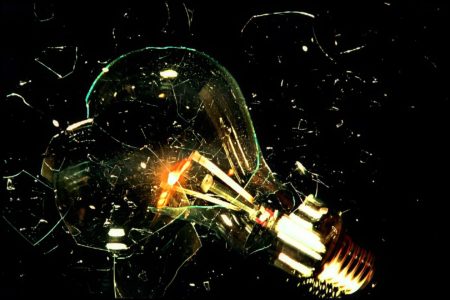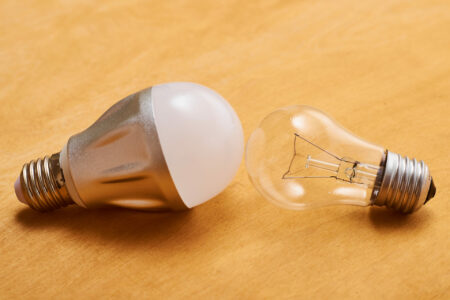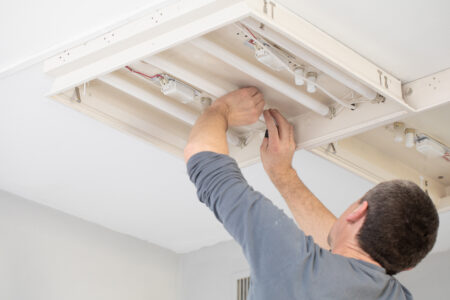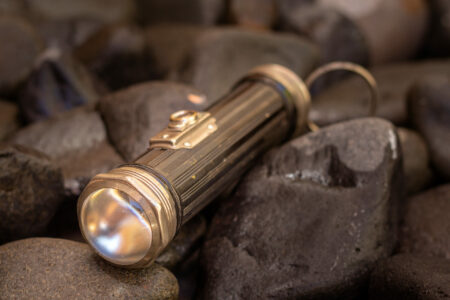Light-emitting diodes and laser diodes sound like the same thing as they both emit light by producing photons. However, they don’t work the same way. So what’s the difference between LED and Laser diodes? Let’s find out the details.
Difference Between LED and Laser Diode: Overview
LEDs and laser diodes emit light by producing photons, but the light is different in both types. The main difference is that LED light is dispersed and multidirectional. That’s why you’ll find LED lights in most indoor and outdoor lighting applications.
Meanwhile, laser diodes emit focused light with a narrow beam. Laser diodes are used in medical surgeries, metal cutting, optical communication, and more. That’s thanks to their instant response time and high power.
What’s an LED?
Light-emitting diode, also known as an LED, is a semiconductor device that produces photons in the form of light when an electric current passes through it. How?
When an electric current passes through the semiconductor material of a diode, electrons combine with holes and release energy in the form of light.
Since LEDs operate using semiconductor materials, they’re also known as solid-state devices. The term solid-state differentiates LEDs from traditional light sources that use heated filaments or gas to emit light.
Semiconductor materials have different band gaps. When these band gaps receive an electric current, they produce light in various wavelengths and colors.
For example, modern LEDs produce primary colors such as red, green, and blue (RGB). You can also produce various light combinations from LED lights by using light blending options and controlling the brightness of each color.
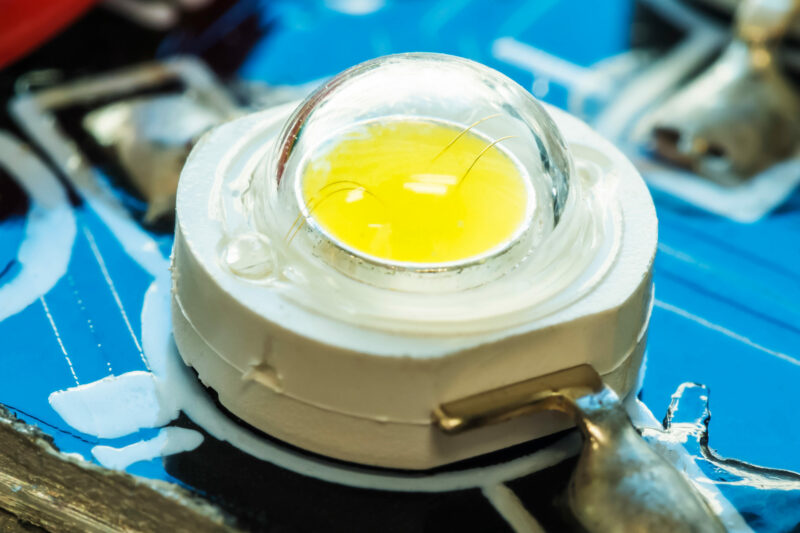
Uses of LED
Since they’re small-sized, energy-efficient, and environmentally friendly, LEDs are used in various applications. For example, TVs need LEDs to produce images on the screen. Years ago, CFLs and LCDs were used in TV backlights.
But recently, LEDs have taken over the market as they save more energy, provide better contrast, and generate less heat. Similarly, LEDs are also used in smartphones and computers. That’s because they allow these devices to be slimmer, less expensive, and more energy efficient.
What’s more, the use of LEDs in the automotive industry is expanding. That’s because LEDs provide better visibility for drivers and pedestrians while saving more energy than other light sources. You can find LEDs in dashboard lights, door lights, climate control systems, and even on top of some cars.
Pros and Cons of LED Lights
Despite their energy efficiency and long lifespan, LED lights have some downsides. Let’s take a closer look at the pros and cons of LEDs.
LED Pros
LEDs use significantly lower energy than traditional light bulbs, so they’re far more efficient. They also don’t burn out fast like other light sources. Depending on the use, LEDs can last for up to 12 years. This offers better value for money in the long run.
In addition, LEDs emit light in one direction, making it easier for light to reach a specific area without wasting energy. This eliminates the use of reflectors used with traditional lights.
Besides, LEDs offer more versatility in terms of color temperature. They have a wide spectrum of CCT from 1,000K to 10,000K. So depending on your desired application, it’s much easier to find something that suits your needs in the LED market.
Furthermore, LEDs are beneficial in other aspects besides lighting, such as healthcare. For example, LEDs with specific wavelength aid in the treatment of some sleep disorders.
Since LEDs emit sharp and bright light that doesn’t dazzle, they’re the main source of light in nursing homes. That’s because they can enhance vision levels in the elderly and help them sleep better.
Other pros of LEDs include the following:
- They’re environmentally friendly as they don’t contain mercury
- Due to their small size, LEDs can be arranged in different patterns with various shapes to create unique lighting designs
- Better suited for ambient lighting when you need multiple colored lights for different moods
LED Cons
On the flip side, LEDs usually cost more than fluorescent and incandescent lights at purchase time. However, you won’t need to change them so often, thanks to their longevity. Add to that, LEDs are usually prone to premature burnout if they’re not coupled with a decent heat sink.
It’s also not always easy to replace your old lights with LEDs. For example, if you’re using dimmer switches, they might not be compatible with LED lights. That means you might spend extra to replace your old dimmable lights.
White LEDs have a spectrum that’s much different from the sun or incandescent lights. As a result, some objects’ colors may be perceived differently under LED illumination.
Other drawbacks include the following:
- Not suitable for use in winter conditions
- Attract insects
- The illumination dims over time, resulting in lower brightness and unbalanced lighting
What’s a LASER Diode?
A Laser, or Light Amplification by Stimulated Emission, is a device that uses the principle of stimulated emission of radiation to produce light.
In a laser device, the electrons in the atoms of the lasing material become excited when they absorb energy. This energy comes from a lighting source or an electric current.
When excited, electrons go from a low-energy state to a high-energy state. After that, the electrons revert to their original state and emit photons in the form of light.
Laser diodes produce a focused beam of laser light with uniform wavelengths. Thanks to this feature, laser lights can focus on tiny spots. That’s why laser diodes are used in different technologies, like barcode readers, fiber optics, medical surgeries, and security systems.
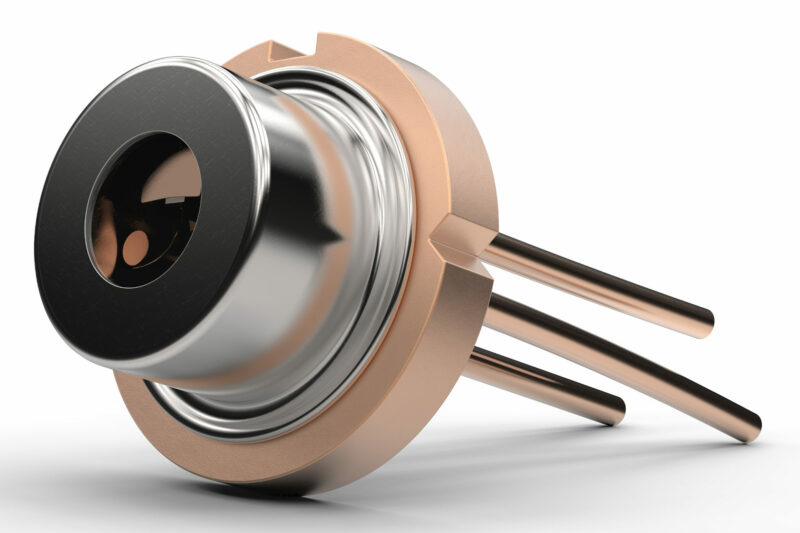
Uses of LASER Diodes
Laser diodes produce monochromatic, well-directed, and coherent light, which makes them useful in several applications.
For example, they’re widely used in electronics such as printers, DVD players, and fiber optic communication. What’s more, laser diodes are essential for industrial purposes as the high-intensity laser beam is useful in drilling, cutting, and welding.
In medical surgeries, laser beams provide accuracy and precision to remove unwanted tissues and tumors. In addition, laser diodes are the main light source for silica fiber lasers, which are widely used in the telecom industry.
Some different band lasers are also used in optical amplification. Finally, laser diodes are handy in scientific instruments, like spectrometers, contact-lens measurements, and rangefinders.
To sum up, lasers aren’t suitable for everyday tasks. They might be ideal for decorations and projections, but not for activities, such as reading or doing crafts.
Pros and Cons of Laser Diodes
Laser diodes are one of the most commonly used laser sources in today’s market. Though, they still have some drawbacks.
Laser Pros
Laser diodes are generally less expensive than other laser types. They’re also more compact, making them ideal for use in small electronics such as DVDs and optical data storage devices.
Besides, diode lasers need minimal power to run and can operate on small-volt batteries, which isn’t the case with other laser types. In addition, laser diodes are more eye-catching. That’s why they’re used in decorative lighting and other light displays like disco lights.
What’s more, they produce coherent light, which doesn’t spread out as much as other light sources. This gives laser diodes the upper hand over LEDs in terms of saving energy.
Other advantages include:
- They’re easily manufactured
- The light produced by laser diodes is much more efficient than other laser types
- Pretty high optical power

Laser Cons
- More expensive than other laser types
- They need big and expensive optics for large source size
- Prone to overheating
- Large laser pellets require much drive current to operate
- Light generated by laser diodes is harmful to human eyes
Difference Between LED and Laser Diode
The main difference between LED and LASER diodes is the way they generate light. LED operates on the principle of electroluminescence where charges combine at a PN junction and produce light in the form of photons.
On the other hand, LASER diodes are based on the principle of stimulated emission. Additionally, LED light isn’t monochromatic. That means it generates various electromagnetic waves with different wavelengths, which is why LEDs produce colored lights.
Conversely, the laser produces monochromatic light, as it contains only one color. We’ll highlight the key differences between LED and Laser diodes in the following table:
| Parameter | LED | LASER diode |
|---|---|---|
| Efficiency | Lower | Higher |
| Chromaticity | LEDs are polychromatic as they produce a wide range of wavelengths. | Laser is monochromatic; it emits light in a single wavelength |
| Response time | Slow | Fast |
| Spectrum | Broad | Narrow |
| Beam nature | Non-coherent light beam | Coherent light beam |
| Optical spectrum | Broad optical spectrum, from 25 nm to 100 nm | Very narrow optical spectrum usually from 0.01 nm to 5 nm |
| Optical power output | Low | High |
| Operation power | Need less power to operate | Require high power to operate |
| Temperature sensitivity | Less dependent on temperature | Temperature dependent |
| Directionality | Produce divergent lights that can travel randomly in all directions | Emit non-divergent and highly directional light beams |
| Cost | Lower | Higher |
FAQs
Are LEDs better than Laser diodes?
It depends on how you’re planning to use them. For industrial applications that require high-power light such as machining and engraving, laser diodes are the better option.
On the other hand, LEDs are used in regular lighting applications like in your home or as office lights.
Can I use LEDs anywhere?
LEDs are significantly sensitive to heat. That’s why you shouldn’t use them in closed fixtures or applications where the light bulb is enclosed in glass or plastic.
These fixtures don’t have proper ventilation, which causes LEDs to overheat and eventually burn out.
